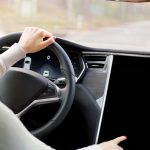Advanced Intelligent Systems, in its EarlyView edition, features an article titled “Vision‐Based Online Key Point Estimation of Deformable Robots” which explores a novel method to improve the control and estimation accuracy of soft robots. The integration of two cameras and a convolutional neural network allows for precise, online key point estimation, tackling longstanding challenges associated with deformable robots’ infinite degrees of freedom and sensor inaccuracies. This development could potentially reshape the way robotic control systems are designed, moving away from marker-based systems to more resilient and efficient solutions.
New Methodology for Soft Robots
Ensuring the precise control of soft and continuum robots presents unique challenges due to their infinite degrees of freedom, unlike rigid robots. Traditional proprioceptive techniques, which rely on integrated sensors, often result in inaccurate shape reconstructions and increased fabrication complexity. On the other hand, exteroceptive methods typically depend on expensive tracking systems with reflective markers, which are impractical for deformable robots that interact closely with their environments.
The article introduces a regression approach using a convolutional neural network for three-dimensional key point estimation. This method employs data-driven supervised learning for online markerless estimation during inference. Simultaneously capturing images of a robotic system from different perspectives at 25 Hz, the network delivers parameterized key point or piecewise constant curvature shape representations for each image pair. The new technique shows a substantial improvement in estimation accuracy, outperforming state-of-the-art markerless methods by a maximum of 4.5%.
Performance and Versatility
In real-world experiments, the proposed approach demonstrated its effectiveness and versatility across various soft robotic systems. Testing on two types of soft robotic arms and a soft robotic fish revealed that the method could handle highly deformable systems with notable precision. The robustness of the method, along with its requirement for no prior knowledge of the shape, underscores its potential applicability in diverse robotic applications.
Reflecting on similar research, earlier studies also aimed to enhance the control and estimation accuracy of soft robots but often faced limitations due to reliance on physical markers and complex fabrication needs. The current approach addresses these issues by eliminating the need for markers and leveraging advanced neural networks for real-time estimations. This method simplifies the integration process and improves the system’s resilience to environmental interactions.
Comparing this to earlier advancements, there is a noticeable shift towards more adaptive, real-time solutions for robotic control. Previous methods often struggled with occlusions and marker damage, leading to inefficiencies and inaccuracies. By moving towards vision-based, markerless systems, the new approach provides a more practical, efficient, and scalable solution for controlling deformable robots.
These insights suggest a potential for further research and development in vision-based estimation techniques, which could enhance the functionality and application range of soft robots. Future studies may focus on refining these methods to increase their adaptability and accuracy across different robotic systems and scenarios. The open-source nature of this full pipeline allows the community to build upon and customize it for various applications, promoting innovation and collaboration within the field.
The implementation of this vision-based approach signifies a meaningful progression in robotic control systems. Developers and researchers can benefit from understanding the intricacies of this method and exploring its potential applications in diverse fields, from healthcare to industrial automation. By addressing the limitations of traditional methods, this new technique offers a promising direction for enhancing the control and efficiency of soft robots in real-world environments.










